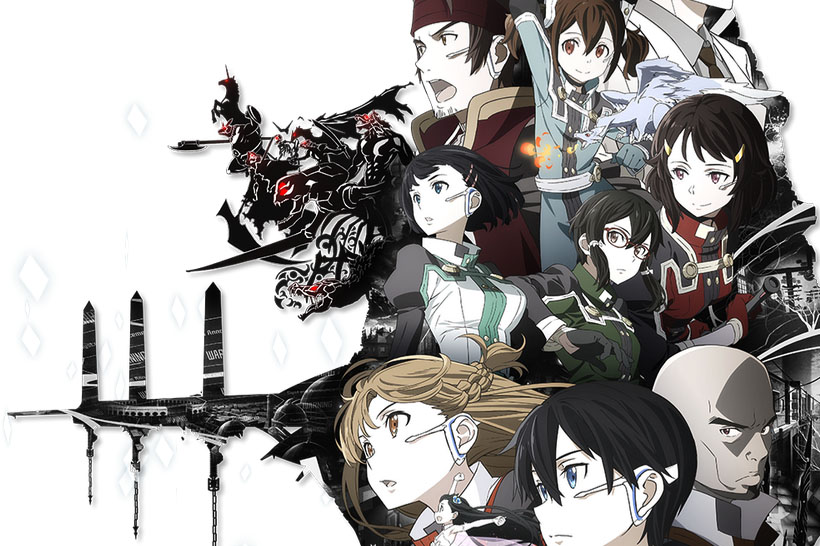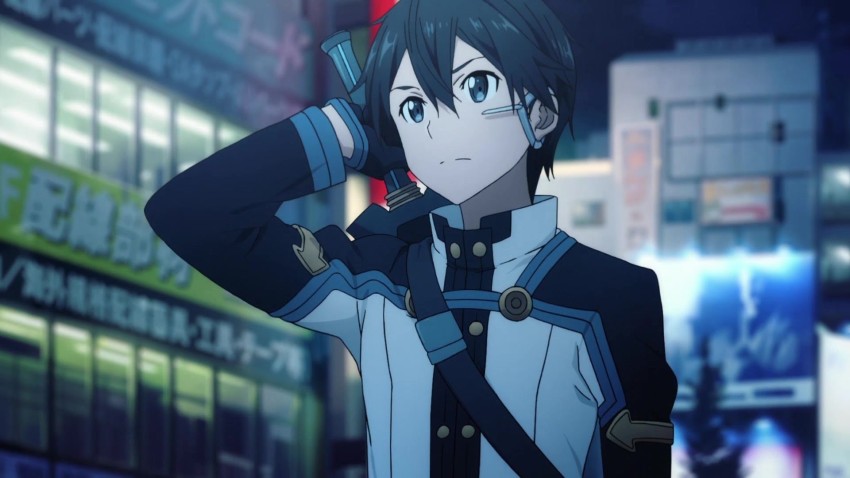Sword Art Online: Ordinal Scale
April 15, 2017 · 0 comments
By Andrew Osmond.
 Sword Art Online: Ordinal Scale, the newest instalment of the Sword Art Online franchise (and the film is all–new, barring some brief flashbacks) was first announced in Japan in October 2015. Weirdly, it has already predicted the future.
Sword Art Online: Ordinal Scale, the newest instalment of the Sword Art Online franchise (and the film is all–new, barring some brief flashbacks) was first announced in Japan in October 2015. Weirdly, it has already predicted the future.
In the summer of the following year, anyone in a big Tokyo park like Ueno or Yoyogi would have witnessed huge crowds of people, mostly but not exclusively youngsters, flocking from one spot to another… all looking intently at their mobile phones. They weren’t on an evening stroll. No, they were competing to catch “virtual” creatures overlaid by commercial networks across not just Tokyo but through many countries round the planet. In New York, for instance, massive crowds stampeded to Central Park in search of something called a Vaporeon.
The Pokemon Go craze is so last year, but Ordinal Scale brilliantly predicts and supersedes it. Sword Art Online fans know the earlier adventures in the series took place in immersive virtual worlds, which you “visited” through games rewiring your senses, feeding you sight, sound and other sensations. You could cross a country while fighting a hundred epic battles, but your physical body always stayed in one place. Ordinal Scale changes that.
The new technology is not virtual reality but augmented reality, AR. Like Pokemon Go, it opens up gameplay beyond your bedroom or your morning commute; to play AR games, you must go to real places to find monsters. But unlike Pokemon Go, the monsters aren’t cute animations on your mobile screen. Instead you activate your “Augma” device, which resembles a headband, and the world transforms into a wondrous landscape – with monsters to fight, of course. “Ordinal Scale” is the name of the leading AR game; its name comes from how it ranks all players, with the seductive promise that you could be Number One…
Like the game, the film puts imaginary characters into real places. The characters are, of course, our old friends from Sword Art Online, topped by Kirito and Asuna, who are very much at the film’s heart. Like any good spinoff, though, Ordinal Scale finds room for very many of the supporting cast. So expect to see Lisbeth, Silica, Klein, Sinon and Agil… and don’t forget Kirito and Asuna’s “daughter” Yui, and Kirito’s feisty kendo-evangelising “sister” Leafa, and many more besides. There are new characters too. One of the most prominent is Ai Yuna, a virtual pop-idol singer with shades of Hatsune Miku (or, if you’re old-school, Sharon Apple in Macross Plus).
 On the “reality” side, readers who’ve been to central Tokyo will recognise such locations in the film as the Tokyo Dome, the UDX complex in Akihabara, the Meiji Shrine, and the nearby area around Yoyogi Park. One of the Ordinal Scale’s slyest touches is to set a crucial sequence at the New National Stadium. That’s a landmark that’s still being built – it will be one of the main venues for the 2020 Tokyo Olympics.
On the “reality” side, readers who’ve been to central Tokyo will recognise such locations in the film as the Tokyo Dome, the UDX complex in Akihabara, the Meiji Shrine, and the nearby area around Yoyogi Park. One of the Ordinal Scale’s slyest touches is to set a crucial sequence at the New National Stadium. That’s a landmark that’s still being built – it will be one of the main venues for the 2020 Tokyo Olympics.
Ordinal Scale, we should specify, is set in 2026, four years after the start of the original Sword Art Online, and chronologically after the end of Sword Art Online II. However, the film has extensive call-backs to the franchise’s first arc, the “Aincrad” storyline. That’s the one where thousands of players were trapped in a deadly virtual game, and when Kirito and Asuna met and formed a relationship – a time of both trauma and joy for them.
This nostalgic tone should resonate with the fanbase. The movie is released eight years after the Aincrad story was first published in Japan in book form. Admittedly, the arc isn’t really over yet. Franchise creator Reki Kawahara is still working on Sword Art Online: Progressive, a multivolume retelling of the Aincrad adventures in light novel and manga forms. Yet it can’t erase time’s passing, and Ordinal Scale acknowledges that the SAO heroes are older now, looking back.
The film also has an amusing subplot about the way that the “Augmented Reality” tech is outmoding the VR game-worlds that Kirito and some other SAO characters prefer. It’s a witty comment on the acceleration of technical obsolescence, and of nostalgia too; these days, even nostalgia ain’t what it used to be. Gaming may be the medium where this sped-up trend is most acute. There are whole magazines devoted to old games; Disney paid the same tribute in Wreck-It Ralph; and anyone who tried to buy the Nintendo Classic Mini on its release will know the power of retro techno.
At the same times, Ordinal Scale gives the assurance of continuity. The film keeps the main credits from the TV anime: director Tomohiko Ito, character designer Shingo Adachi and musician Yuki Kajiura are all back, along with the Japanese voice-cast. And we can say that the final dazzling high-speed battle has stuff – loads of stuff – to make any SAO fan very pleased indeed.
Ito is co-credited with Ordinal Scale’s scenario together with Kawahara himself. The presence of the “god” of the SAO franchise establishes this is no mere spinoff, but a canonical addition to the story. And for those of you wondering if there’s something tucked after the movie’s last end-credits, something that gives possible clues to the next stage of the franchise… We can confirm that, yes, there is.
Andrew Osmond is the author of 100 Animated Feature Films. Sword Art Online: Ordinal Scale is released in UK cinemas on 19th April. Book tickets at saothemovie.co.uk
anime, games, Japan, Ordinal Scale, Reki Kawahara, Shingo Adachi, Sword Art Online, Yuki Kajiura
Leave a Reply